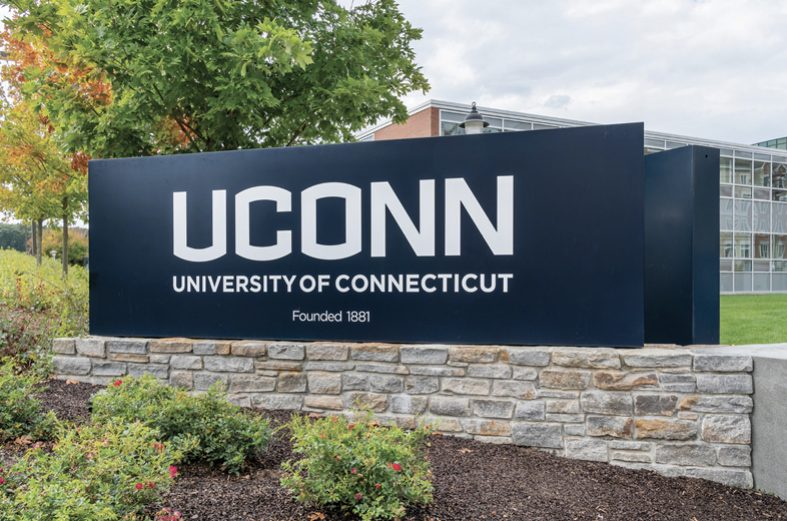By Jay Vadiveloo
Over the past 14 years, the Goldenson Center for Actuarial Research at the University of Connecticut (UConn) has engaged in numerous research projects with graduate actuarial students that can best be labeled as “applied actuarial research.” This article will discuss what constitutes applied actuarial research as practiced by UConn’s Goldenson Center, the necessary requirements for good applied actuarial research, and how it differs from academic research and the work done by consulting actuaries. In particular, this piece will cover why applied actuarial research should be supported and encouraged by our profession, and will contemplate the beneficial impact it will have on facilitating a more experiential education for actuarial students and greater collaboration between industry and academia.
The applied actuarial research projects we have conducted over the years have become the basis of over a dozen research projects of doctoral students and created actuarial models and algorithms that are actually utilized by industry clients. Students get an added advantage in differentiating themselves from other job candidates to secure permanent jobs in industry and academia as well as summer internships.
A definition of applied actuarial research
This definition has evolved and matured over the years based on the key features of Goldenson Center research projects that have generated the greatest visibility, usage, and demand by industry clients. Below are six key requirements as to what constitutes good applied actuarial research.
- The research problem should originate from industry and not just be of theoretical interest.
- The research has to be applicable and impactful for the client.
- The research has to be an improvement over what is currently being done.
- The problem formulation and solution should be innovative and new, but applicable in practice.
- Ideally, the problem formulation and solution should have a theoretical foundation with actuarial and academic rigor behind it.
- The research has to be developed collaboratively with the client and allowed to evolve naturally as results emerge.
I spent over 15 years in actuarial consulting before becoming the director of the Goldenson Center, so I know that actuarial consulting work may incorporate the first four requirements. However, with the pressure actuarial consulting firms face on meeting revenue and billable goals, the sixth requirement will seldom be met, and the fifth requirement may not be part of the project scope. Yet, the last two requirements make for good applied actuarial research.
Academic research, on the other hand, could incorporate the last two requirements, where the client here may represent fellow researchers. Academic research could satisfy requirement No. 4 in being innovative, but may not create a solution that is applicable. Furthermore, academic research rarely satisfies the first three requirements—and this is the main reason why academic research and models are rarely utilized in industry or by practicing actuaries.
All Goldenson Center projects strive to fulfill all six requirements of what constitutes good applied actuarial research.
Benefits of applied actuarial research
In the detailed descriptions that follow of a couple of projects, we can see the following benefits:
- Enriches the profession by fostering greater collaboration between industry and academia
- Provides students with real-life exposure to practical actuarial problems
- Results in new and innovative techniques in actuarial modeling that are actually implementable
- Has a significant impact on society and the community through the use of a nontraditional, socially conscious research approach
Some examples of applied actuarial research projects
- Teams and students at the Goldenson Center have focused on several areas. They include:
- Retirement financial planning models both at the accumulation and decumulation phases
- Predictive models for variable annuity lapses and partial surrenders and Universal Life premium persistency modeling
- Risk management for small businesses
- Application of artificial intelligence (AI) techniques to model the bereavement impact of second-to-die policies and improve the estimation of low frequency, high severity actuarial risks (see “Model Behavior—Applications of Artificial Intelligence in Actuarial Science,”[1] Contingencies, November/December 2019)
- Modeling healthy and unhealthy life expectancies and its various applications in financial modeling
All these research projects have been done collaboratively with industry clients, and the models and findings have been implemented by the client.
Recent examples of applied actuarial research projects
Modeling expenses at retirement
This project started off as a retirement financial planning model for a major financial advisory client company. From weekly discussions with the client, the project evolved into a detailed modeling of retirement expenses and a resultant innovative two-pronged investment strategy at retirement. The project recognized two components of retirement expenses:
- Basic expenses incurred while healthy and unhealthy, where basic expenses are defined as the minimum level of expenses needed during retirement; and
- Discretionary expenses from any leftover retirement assets after all basic expenses have been met. Discretionary expenses can be viewed as a measure of quality of life at retirement.
A detailed study of basic expenses at retirement and its impact on retirement spending is new in the actuarial literature. A theoretical framework was developed to model basic expenses using data from the Bureau of Labor Statistics. We recognized that basic expenses vary by several factors:
- Household size—the larger the household size, the larger the basic expenses
- Preretirement household income—the greater the preretirement income, the greater the level of basic expenses
- Geographical location
- Age of the retiree
Basic expenses while a retiree is unhealthy are always greater than healthy basic expenses and can be approximated by the formula:
Basic unhealthy expenses = (basic healthy expenses) + (factor*preretirement income)
Our basic expense model made some additional assumptions regarding the investment strategy for retirement assets allocated to meet basic expense needs. Because basic expenses have to be met with a high degree of certainty, we developed a conservative investment strategy with a high degree of certainty (typically > 99%) to ensure that all basic expenses while healthy and unhealthy will be met.
The modeling of basic expenses required another key estimate—the retiree’s life expectancy while healthy (HLE) and the retiree’s life expectancy while unhealthy (ULE). Based on previous research by the Goldenson Center, a Markov Chain-Monte Carlo model was created to develop a distribution of HLE and ULE realizations and an estimate of HLE and ULE to model basic expenses while healthy and unhealthy.
Once the portion of retirement assets needed to cover all basic expenses with a high degree of certainty was determined, we could then model the level of discretionary expenses available while the retiree is healthy. The model for discretionary expenses used a different investment strategy and ruin assumption.
- An aggressive investment strategy (i.e., high mean, high volatility) and a high ruin probability of 50% to maximize the annual level of discretionary expenses while the retiree is healthy.
The flexibility of using an aggressive investment strategy with a high ruin probability only makes sense if all basic expenses can be met with a high degree of certainty. The retiree is then able to withstand a higher level of risk for discretionary expenses because unlike basic expenses, this represents a level of expenses that is nice to have, but not required.
Several takeaways from this retirement expense modeling project:
- It incorporates all aspects of the Goldenson Center’s applied actuarial philosophy.
- New and innovative ideas were developed from
this project:
- Modeling basic expenses while healthy and unhealthy
- Having a two-pronged investment strategy and ruin probability for basic and discretionary expenses
- Most importantly, this model has been adopted by our client and is a significant enhancement to its existing models.
Our retirement financial planning model naturally lends itself to be enhanced in several ways:
- Modeling retirement expenses for a couple and incorporating the bereavement impact and additional costs upon the disability or death of a spouse
- Incorporating insurance products like immediate annuities, deferred annuities or fixed-indexed annuities to complement the investment strategy
- Incorporating other retirement goals like bequest needs and liquidity needs in the expense model.
Students for Workers Movement (SWM)
Unlike the retirement expense project, which is more of a traditional actuarial project, the SWM project can be classified as a nontraditional, socially conscious type of applied actuarial research. We will demonstrate that the SWM project does fulfill all the characteristics of applied actuarial research with more of a social impact than having a direct impact on the insurance and financial services industry.
Motivation
Small businesses, defined by the Small Business Administration as businesses with 500 or fewer employees, represent the largest and fastest-growing business segment in the U.S. However, small businesses also suffer from high failure rates and rarely incorporate sound risk management practices. The SWM project uses teams of students to provide risk management services to small businesses in order to reduce failure rates and allow small businesses to grow and be sustainable.
The initial focus of the SWM project is on small businesses in Connecticut that are minority-owned, women-owned, veteran-owned, or have a disabled owner or hire predominantly disabled workers. We believe that these are the most vulnerable segments of small businesses that may be susceptible to failure.
An illustration
Consider a minority-owned barbecue small business that has been in business since 2011. This is a husband-and-wife ownership that comprises three business segments—a food truck, a catering service, and a restaurant that should be up and running within a year. Some of the key risks facing this business include the following:
- Owners are totally swamped with managing the business and have no time to step back to analyze the business.
- There is no information on the profitability and potential of the three business segments.
- There is no contingency or succession plan if anything happens to the owners.
- There is no strategy on how to generate additional sources of revenue by capitalizing on some of the unique strengths of the business, like its barbecue sauce, the quality of its barbecue ribs, and the customer loyalty it has developed.
- There is no financial or retirement plan for the business and owners.
- Some preliminary recommendations from the SWM team include:
- Develop cashflow statements on a monthly basis for the past couple of years—and one year of cashflow projections—to better understand the profitability of the various business segments and any seasonality in revenue.
- Provide detailed job descriptions for both owners to assist in succession planning and to facilitate the hiring of assistants for the chef and operations manager.
- Link the small business to the corporate clients of the Goldenson Center to create a retirement plan for the business and owners.
- Work closely with the owners to develop a two-year marketing plan to help the business attain sustainable growth and leverage its brand to generate additional sources of revenue.
While this project is ongoing and is part of several other small business risk management projects being undertaken by the Goldenson Center, it does satisfy several of the criteria of applied actuarial research. The SWM project fits into the category of nontraditional applied actuarial research and has the potential of having a significant, positive impact on the small businesses that SWM is targeting. Similar to the retirement expense modeling project described earlier, the SWM project could expand beyond Connecticut and could become a national movement. One of the immediate goals of the SWM project is to host a Small Business Risk Management Colloquium once we have completed the analysis for about a half-dozen small businesses. The colloquium will showcase the small businesses analyzed by the SWM teams, our key findings, and the audience will include corporate Advisory Board members of the Goldenson Center. We will use the colloquium to generate funding and support from corporations for the SWM project by demonstrating how a sustainable and viable small business environment is not only good corporate policy, but could also increase the demand for goods and services from corporations.

Conclusion
The growth and development of any discipline or profession requires strong collaboration between academics and practitioners. This is especially true for the actuarial profession, which has grown largely due to the innovative techniques and products being developed and implemented by practicing actuaries in industry. However, with closer collaboration between practitioners and academics, more sophisticated and cutting-edge tools and models with business applications could be developed.
The applied actuarial research philosophy that the Goldenson Center has created over the past 14 years has demonstrated the benefits of closer collaboration between industry and academia if the research solves real problems in industry and can be implemented. I hope that this article will result in more research centers like the Goldenson Center that would foster greater collaboration between academia and industry.
Applied actuarial research should be viewed as a new school of thought for our profession, as opposed to a specific area of research. I cannot help but think of how John Lennon’s famous anthem “Imagine” a meditation on being able to think beyond our boundaries, could apply to our profession. Imagine a dozen or more actuarial programs across the country with an applied actuarial research center fashioned in accordance with a thoughtful research philosophy, actively collaborating with industry and between research centers. What a difference this would make to our profession, students, academics, and practitioners.
JAY VADIVELOO, MAAA, FSA, is the director of the Janet & Mark L. Goldenson Center for Actuarial Research at the University of Connecticut.
Reference
[1] Retrieved from https://contingencies.org/model-behavior-applications-of-artificial-intelligence-in-actuarial-science/.





